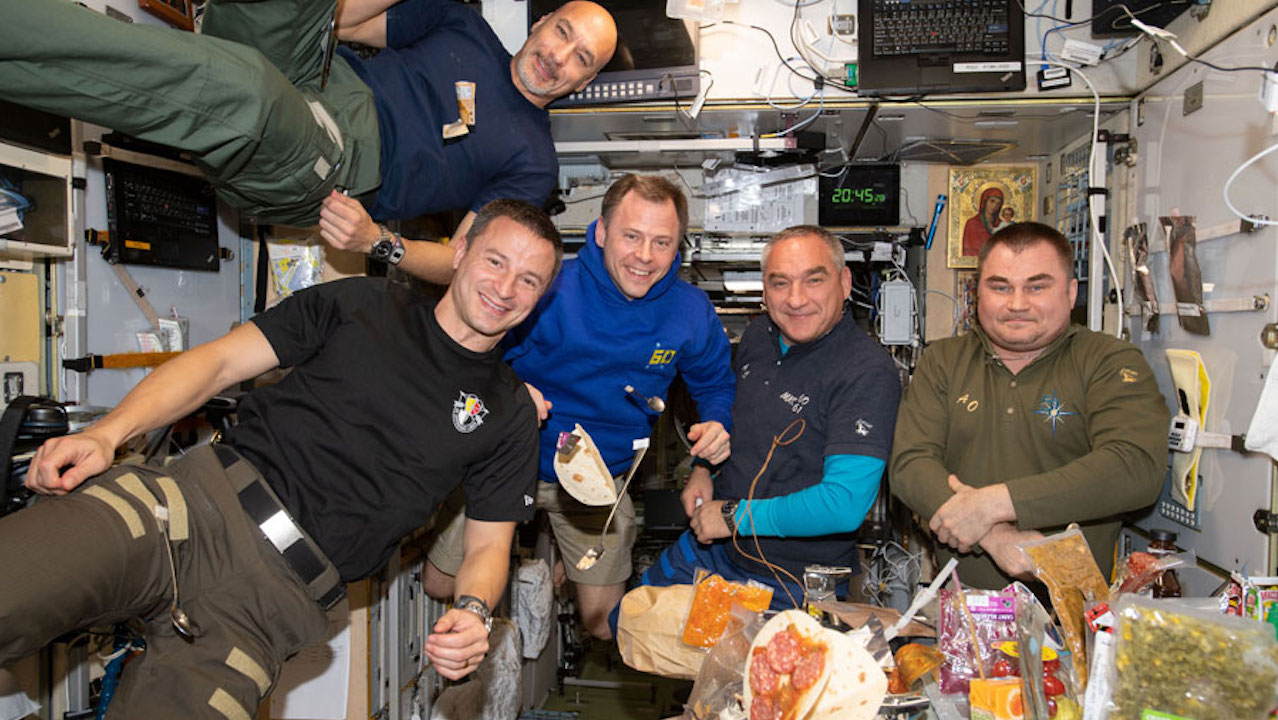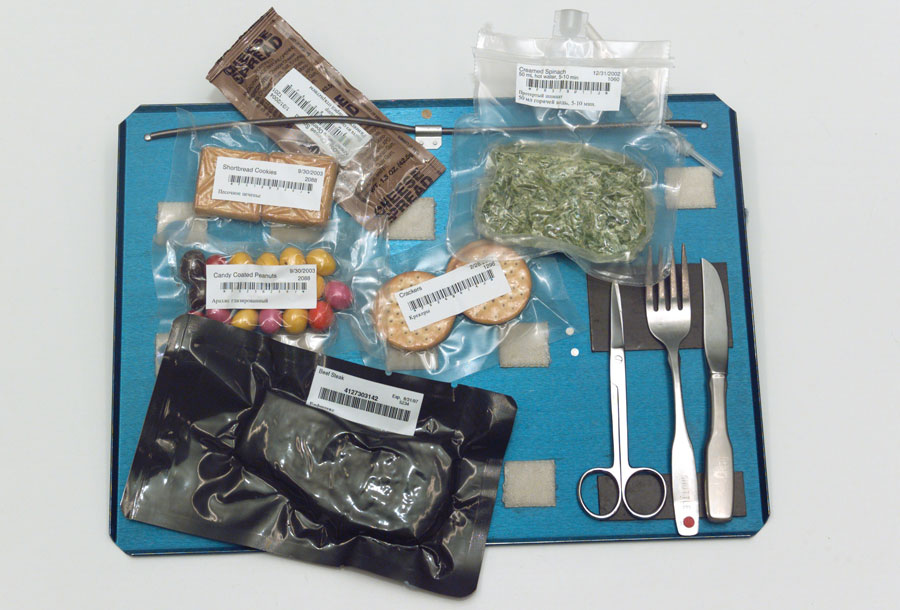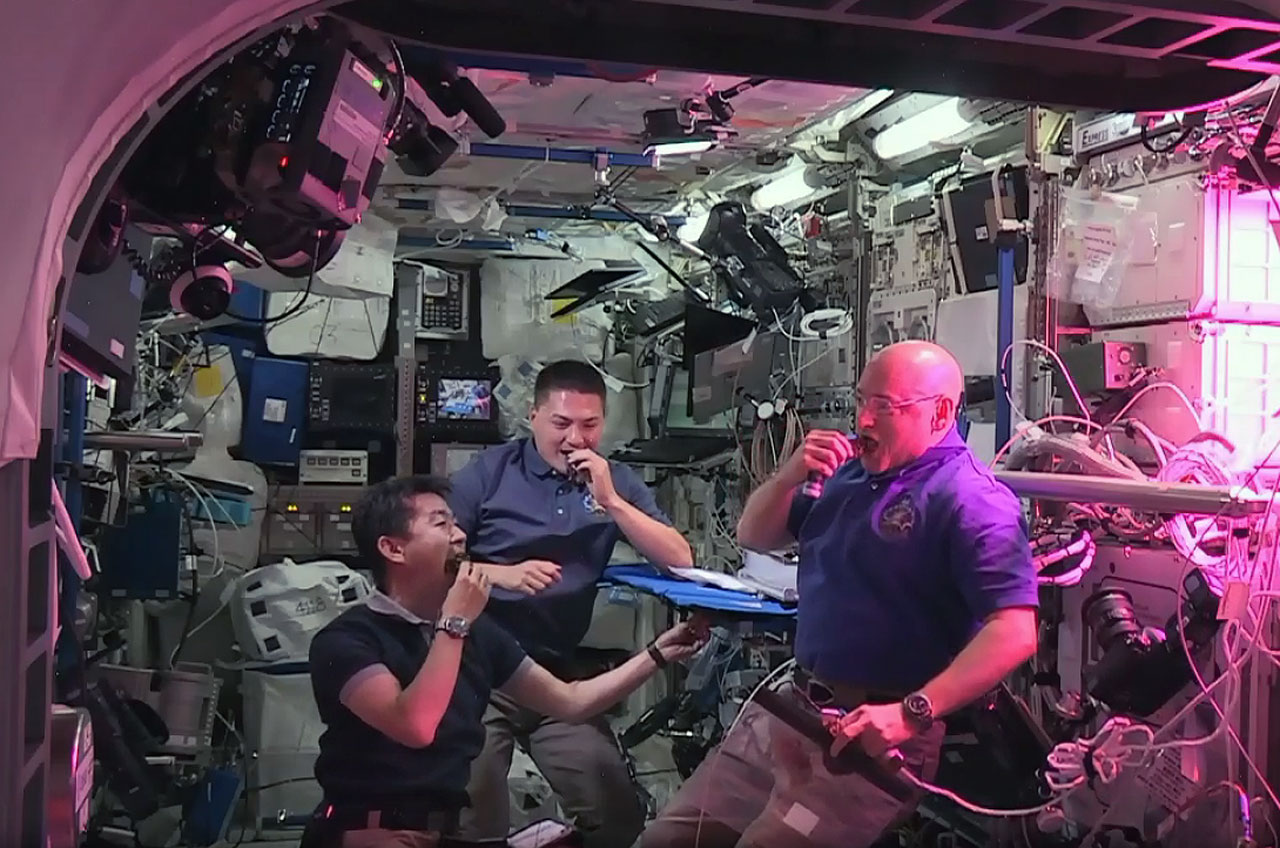What will astronauts on deep space missions eat? 'Neurogastronomy' may have the answer.
Together with the Humanity in Deep Space initiative, chef Bob Perry is considering how the crews on long space missions will experience food.

Scientists and chefs alike are working to revolutionize food technology to determine what astronauts on missions that take them away from Earth for years will eat to maintain both their physical and mental health.
Humanity is well in the midst of preparing for the next era of space exploration, which will involve long stays on the lunar surface and crewed journeys beyond the moon, potentially to the surface of Mars. NASA's Artemis program has undergone its first test flight and is expected to return humanity to the moon by 2025. After this, NASA will attempt to use the moon as a stepping stone for a crewed Mars mission.
Working with the Humanity in Deep Space initiative, University of Kentucky chef Bob Perry is cooking up a recipe for food and nutrition on longer space missions. To do this, the team is considering human flavor perception and how the brain makes use of sensory data to experience and remember food. This study, called neurological gastronomy or "neurogastronomy" allows the "human factor" to be considered when thinking about astronauts' health and nutrition.
Related: Space food: Why Mars astronauts won’t have to hold the fries (video)
Neurogastronomy examines the relationship between humans, the food they eat and where food comes from, and this can be applied to the practicalities of eating in deep space.
"One of the primary concerns is the psychological impact on astronauts during long-duration space missions," UK College of Agriculture, Food and Environment food lab coordinator and a founder of The International Society of Neurogastronomy, Bob Perry, said in a statement. "Through pioneering research and flight experiments, neurogastronomy explores various fascinating areas."
Humanity and Deep Space founding member Kris Kimel said that a journey to Mars from Earth would take around seven months each way, with astronauts expected to spend around a year on the Martian surface investigating the Red Planet. That means Mars explorers could spend between two and three years away from the home comforts of Earth.
Breaking space news, the latest updates on rocket launches, skywatching events and more!
"Understanding the relationship between the brain, the gut, and effects of long-term spaceflight is crucial," UK College of Social Work graduate Kimel added. "Growing food during the journey becomes a necessity."
International Space Station (ISS) crew members have already experimented with growing lettuce and other crops, but the challenge lies in scaling up production to sustain a crew of several individuals for stays in space longer than a few months.
Another critical aspect of astronaut food research is understanding how the microgravity environment of space impacts the digestive process and the communities of microorganisms that live in the stomach — the microbiome of the gut. Examining gut health through the lens of neurogastronomy could help develop specially tailored diets for astronauts that optimize the number of nutrients they absorb while in deep space.
Preserving the "joy of food" far from Earth
Another aspect of the deep-space experience that the team aims to understand is how microgravity affects the senses of taste and smell. This could help better formulate food that ensures that crews don't lose the enjoyment of food while far away from Earth.
Additionally, exploring new preservation and fermentation approaches could not only ensure food supplies last for the duration of long space missions but could also mean that there is variety in the diets of astronauts. This diversity of flavors and food textures could be important to the psychological health of astronauts by limiting so-called "menu fatigue."
"The isolation and confinement experienced in deep space can profoundly affect human psychology. If you go back throughout history, you find a table where people gather to eat food in every single society," Perry said. "Zero gravity cooking tools and applications become essential instruments for spacefarers, enabling them to navigate the challenges and prepare meals in a microgravity environment. Astronauts must also connect through food even in these most extraordinary circumstances."
Though it is primarily focused on deep space, the work undertaken by Perry and the Humanity and Deep Space initiative may also have implications closer to home, back here on Terra Firma.
That's because the knowledge and technology arrived at by Perry and the team could help lead to a sustainable closed-loop food system in space that could then be applied here on Earth. Optimizing the use of resources for deep space missions could also help improve food sustainability and reduce food waste for humans on our planet.

Robert Lea is a science journalist in the U.K. whose articles have been published in Physics World, New Scientist, Astronomy Magazine, All About Space, Newsweek and ZME Science. He also writes about science communication for Elsevier and the European Journal of Physics. Rob holds a bachelor of science degree in physics and astronomy from the U.K.’s Open University. Follow him on Twitter @sciencef1rst.


